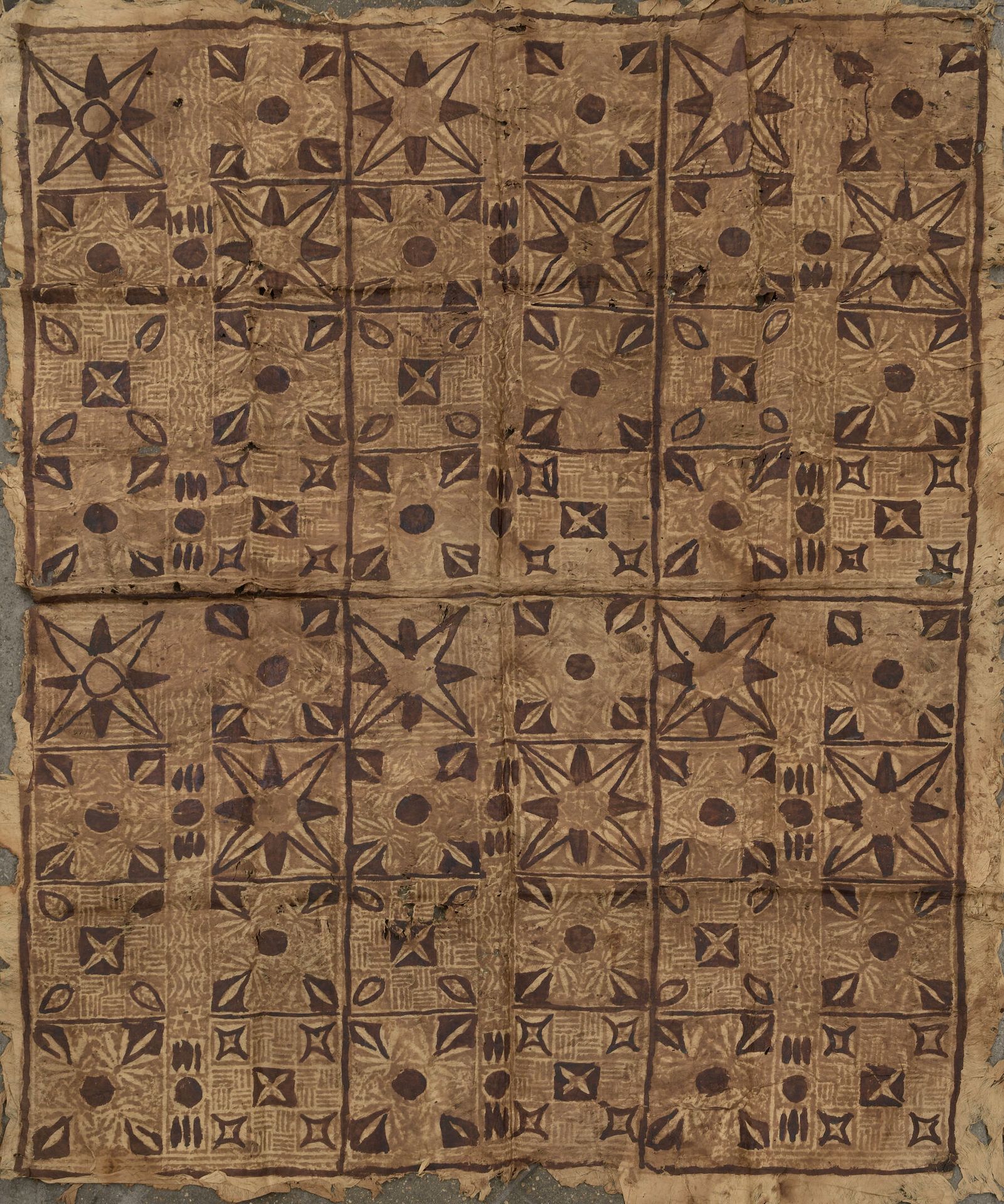Description
Tapa Siapo Elei, Lava type Archipelago of Samoa Chinese mulberry (Broussonetia papyrifera), reddish-brown plant color, extracted from the bark of Bischofia javancia. End of the 19th century, beginning of the 20th century L. 161 cm l. 118 cm Provenance: Collected in the 1930s by an American clergyman Private collection, New Caledonia In Samoa, siapo is the vernacular name for tapa, and Elei's indicates that an engraved board was used to make the designs appear. Here, eight times the plate was transferred to the back of the fabric before certain motifs were overprinted. In this example, the bark cloth was not made up by gluing the strips together with a manioc or arrowroot additive, but was felted, with the many thin strips beaten together until their fibers naturally interlocked. The dimensions indicate that this is a lava lava, the loincloth that men wore around their waists.
143
Tapa Siapo Elei, Lava type Archipelago of Samoa Chinese mulberry (Broussonetia papyrifera), reddish-brown plant color, extracted from the bark of Bischofia javancia. End of the 19th century, beginning of the 20th century L. 161 cm l. 118 cm Provenance: Collected in the 1930s by an American clergyman Private collection, New Caledonia In Samoa, siapo is the vernacular name for tapa, and Elei's indicates that an engraved board was used to make the designs appear. Here, eight times the plate was transferred to the back of the fabric before certain motifs were overprinted. In this example, the bark cloth was not made up by gluing the strips together with a manioc or arrowroot additive, but was felted, with the many thin strips beaten together until their fibers naturally interlocked. The dimensions indicate that this is a lava lava, the loincloth that men wore around their waists.
